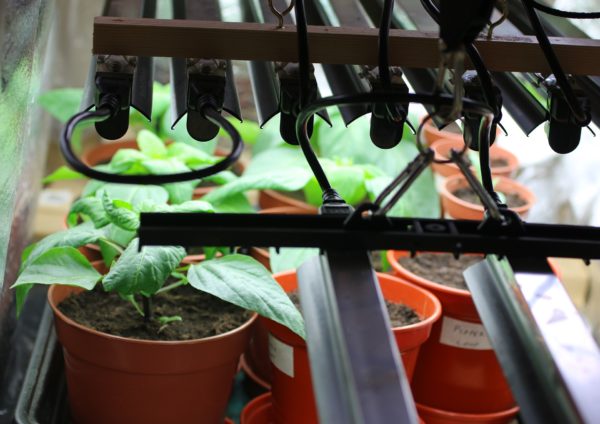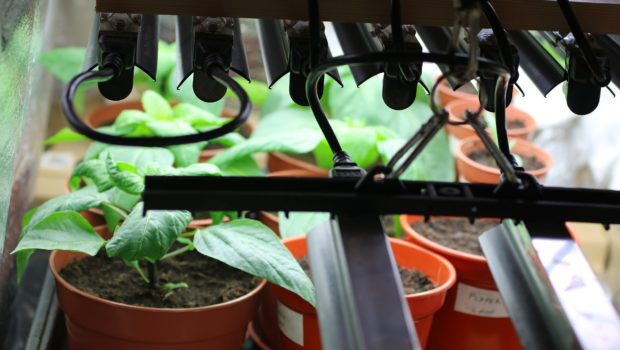Key Facts About Blue Light to Keep in Mind in Your Grow House
Plants and technology don’t seem a natural fit at first glance. If you’re a regular reader, however, you’ll know that we’ve already spoken about some of the benefits of using LED lights in your grow house. If you missed that post, check it out here.

Image by HarrietP from Pixabay
In this post, we’re going to delve a little deeper into the effect of light—particularly blue light—on your gardening efforts.
Why Not Fluorescent Lighting?
Fluorescent lighting contains the full spectrum of colors. Sunlight emits a spectrum of green, blue, and red light, with red and blue being most efficient at stimulating and regulating growth. With fluorescent lighting and other conventional options, red and blue are diluted. You might, for example, find that a traditional bulb emits just up to 40% red light. LED lights, by comparison, can emit up to 100% red light.
Why Is Red Light Important for Plants?
Red light seems rather dim to humans when compared to yellow. For plants, the situation is different. Red light, particularly from LEDs, is more easily converted into the photosynthetic photons that plants need to survive.
If you’re in a low-light climate, or in the Northern hemisphere where light is less abundant in winter, red LEDs are closer to the light that the sun produces.
Why Add Blue Light to the Mix?
Red light does, undoubtedly, promote better growth and yield. In nature, however, the plants receive both red and blue light from the sun. By focusing solely on red, you increase the likelihood of abnormal development.
Adding blue light can promote better yields because the combination more closely resembles natural lighting conditions. Seasoned growers use blue light to promote chlorophyll production in sprouting seeds.
How Much Blue Light to Add?
According to a study conducted in the Netherlands, adding just 6% of blue light can help plants achieve optimal growth. This is because blue light stimulates photosynthesis.
What About Green Light?
Great, you were paying attention. Around about 35% of the sun’s rays are in the green color spectrum. Green grow lights promote more even growth, but they’re useful in other ways too.
Green lights promote lush, but short, vegetative growth, and it doesn’t interrupt the plant’s sleep cycle. Many growers use green lights as a light source to navigate their grow rooms. The green light is bright enough to make it easy for humans to see, but not bright enough to disturb the plants.
Gardeners may also use green light when they need to examine the leaves or stems of plants.
Green light, however, is not always as useful as we’d like. Green isn’t ideal in cases where you want to promote taller growth rather than have the plants bush out. Green works well for bushy plants like bush beans, but it isn’t as good for taller plants like corn and tomatoes.
While some green is used for photosynthesis, most green light from the sun is reflected by the plant’s leaves. That’s why it can be tricky to determine exactly what the right proportion of green light should be.
Final Notes
Red remains the primary color of choice for greenhouse lighting. To get the best possible results, gardeners should also add around 6% blue light and experiment to find out how much green light to add.
As with all things gardening, there’s no one simple solution. It’s up to you to carefully research which lighting options work best for the type of crop you’re growing. From there, you can fine-tune your results by adding or subtracting more light.
















